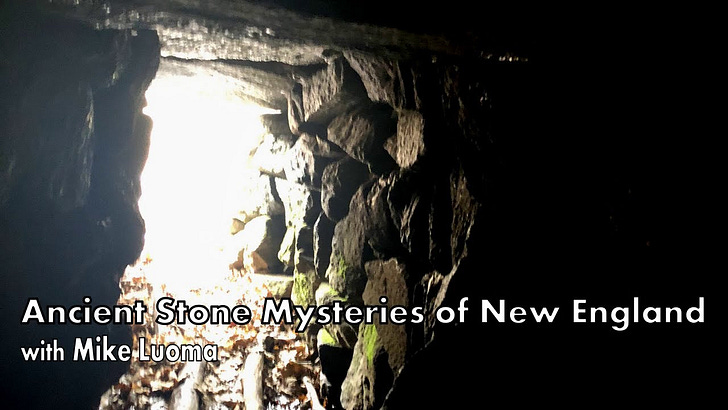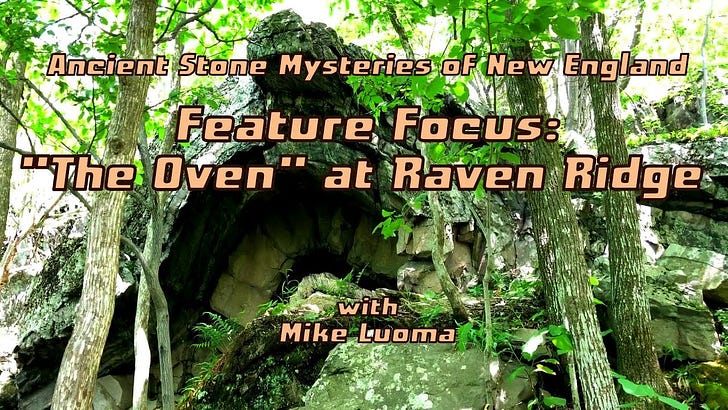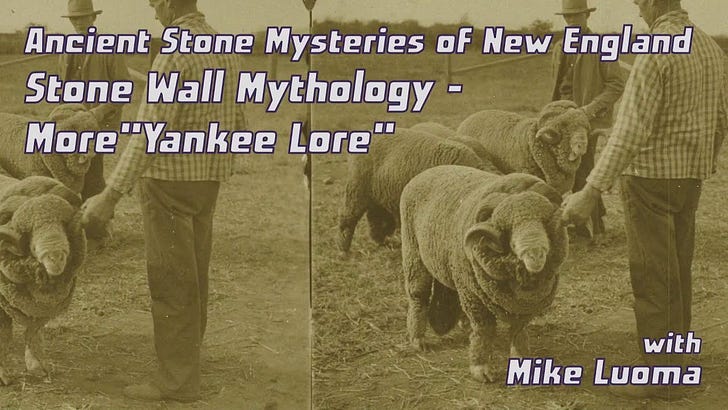ASMoNE - The Series
Adding "Episode" and Number to My Ancient Stone Mysteries of New England Presentations
A recent post featured my new series of short video presentations, a format I’ve been calling the Ancient Stone Mysteries of New England “Feature Focus”.
Messing around over on YouTube, I also made a slight change in the titling of my more observational video presentations, the somewhat heavily scripted 20-minute-long shows which carry the Ancient Stone Mysteries of New England monicker instead of an “Experiencing…”, “Revisiting…”, or “Returning…” label, for videos which are more site visit specific.
I’ve made these more involved Ancient Stone Mysteries of New England videos whenever I’ve felt a need to explain something in greater detail, or felt like engaging in speculations which I wanted to make clear were my own, or when wanting to address something that kind of got stuck in my proverbial craw. They don’t come out frequently — I’ve made only seven since putting out the first one four years ago, in December of 2020.
My sixth in the series, the video on “Yankee Lore” released last June, has been my most successful video yet, and continues to gain views. Though it could hurt its viewership, I recently added “Episode 06” to the title, so it reads Ancient Stone Mysteries Of New England - Episode 06: "Yankee Lore".
I’m hoping this will lead its viewers to more of my other videos, which have also had “Episode” and their Number added to their titles. This made the most sense for the first episode, which had simply been titled Ancient Stone Mysteries of New England. It is now more obviously “Episode 01”.
Though now in a sort-of makeshift episodic sequence, these don’t necessarily flow in any particular viewing order, as each self-contained episode covers its own subject. Through my research and experience, I knew more as I produced each episode. There’s some progression in that, I suppose.
Consider this post my little unofficial guide to the series.
Over time, my knowledge has expanded, as I’ve learned more about many subjects brought to bear in studying stonework — geology, history, anthropology, archaeology, and such — which has made me more cautious, perhaps, in some ways. I don’t think I would speculate on the cave art quite so extensively as I did in Episode Two were I to make this presentation today, for example. Though I do believe there is something there.
Each step in creating these Ancient Stone Mysteries of New England Episodes is fairly involved. I’ve developed my own process, and while I don’t know that I do anything “right”, I turn out videos that I’d want to watch. That’s another motivator for me on these — I’m making videos that I wish I could just find and watch.
I usually do a lot of writing and rewriting on the scripts for these. The third episode’s script, on Stonework Damage and Doomed Schools, took a great deal of honing, editing and rewriting. Lots of research. Production-wise, some of the curious side-notes and the history involved meant incorporating a lot of public domain images and material, too.
I do realize that, ultimately, the idea of a 19th Century clergyman deliberately damaging a stonework site and dooming schools in the past and present is non-scientific, and neither provable or disprovable. It is what it is. I will note that they’re building the new Burlington High School on the site of the old. I have not yet seen what sort of new damage they’ve done to the surroundings. I wish them well. My tax dollars at work…
As well as looking into the possible Indigenous Stonework of New England, I find looking into the history of those who did likewise back through the decades fascinating, too, the history of those investigating New England’s possible alternate histories. I travelled to Castleton, Vermont for a look at some of that history as preserved at the Calvin Coolidge Library, at what was once Castleton State College, and shared that look at Ancient Vermont as my fourth video in the series.
Had some fun making my Calendar II footage look older at the start of that one. At over 26 minutes, it’s my longest presentation in this series, but I could easily see this subject filling a full-length documentary, or making an incredibly cool period-piece movie. This is definitely one of those videos made because I wished I could have watched it myself. That “Ancient Vermont” Conference was really something, an important milestone in the study of ancient stonework in the Northeast. And its organizer, Professor Warren L. Cook, was a very interesting character.
Over a year would go by before the next video seemed necessary. I’d released my Ancient Stone Mysteries of New England Book, and the Facebook Group was growing like crazy. I found myself using an illustration I’d made, a page from my notebooks, to try to begin to explain what I looked for in the stonework. Sometime in October of 2023, it occured to me, while sharing the illustration and explanations yet again, that it might make a perfect subject for a new Ancient Stone Mysteries of New England Video that I could share in the future.
There was another long gap before the next presentation. In my notes, there are sentences here and there, paragraphs — the stirrings, the beginnings, of the next video, months before I began writing it in earnest. This would become my “Yankee Lore” piece, the popular one, released in mid-June of 2024.
And while I took apart myths people believe about a Pristine Wilderness and other founding fictions, there was one major myth that couldn’t fit, and would have to wait for its very own presentation for a full accounting — the stone wall myth, inspired by the fictions of city-bred fabulist Robert Frost and perpetuated currently primarily by stone wall mythologist Robert Thorson, a myth which doesn’t include Indigenous stone rows.
And that is the series-to-date. I don’t know when the next episode will come. Or what it will be about. Well, aside from it being about our Ancient Stone Mysteries of New England, naturally.
The last two videos above have accompanying transcripts+ here on Substack — beyond a transcript of the video there are exclusive photos, some of the public domain illustrations used in the presentations, and much more.








There are a fair number of stone site videos out there on YT. Your efforts in making a good presentation are evident. We like your format, that you proceed logically, not pushing a particular theory. Plus, you are a good narrarator. Others out there spend their video mugging for the camera, trying to press their own conclusions as fact. Keep up with the way your presenting Mike.